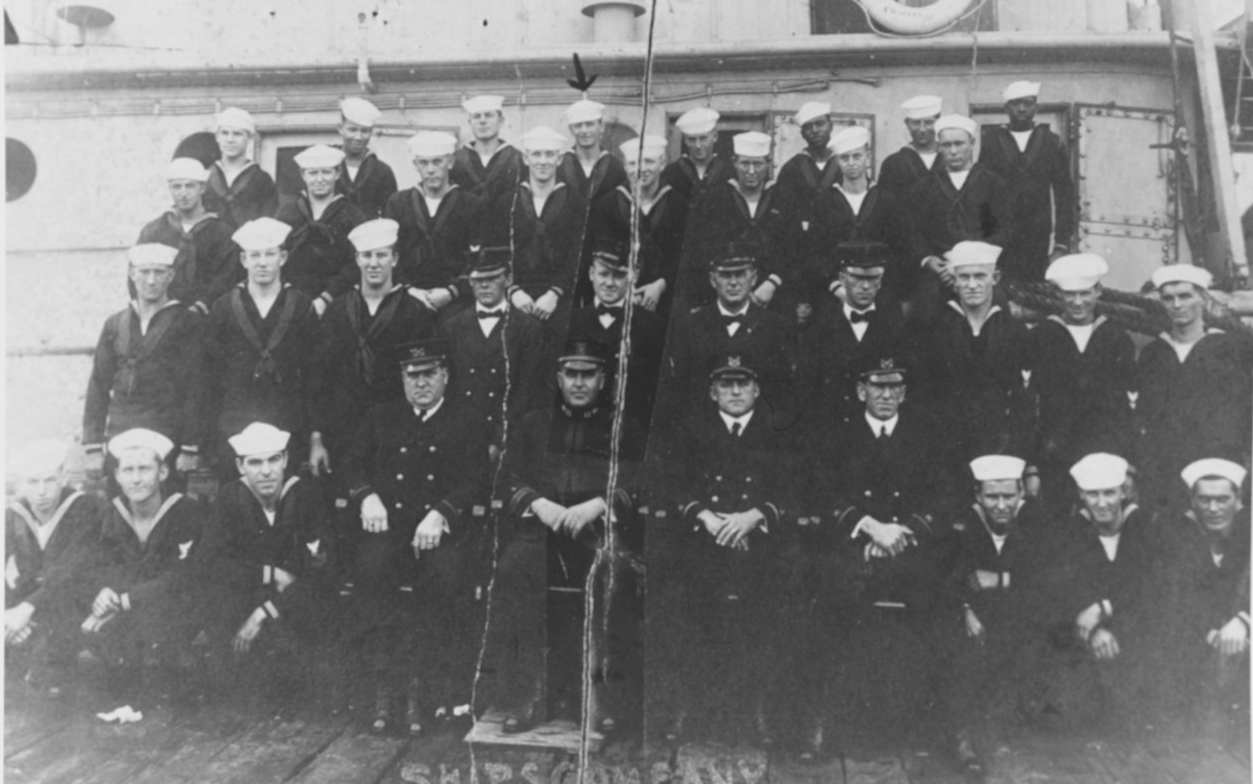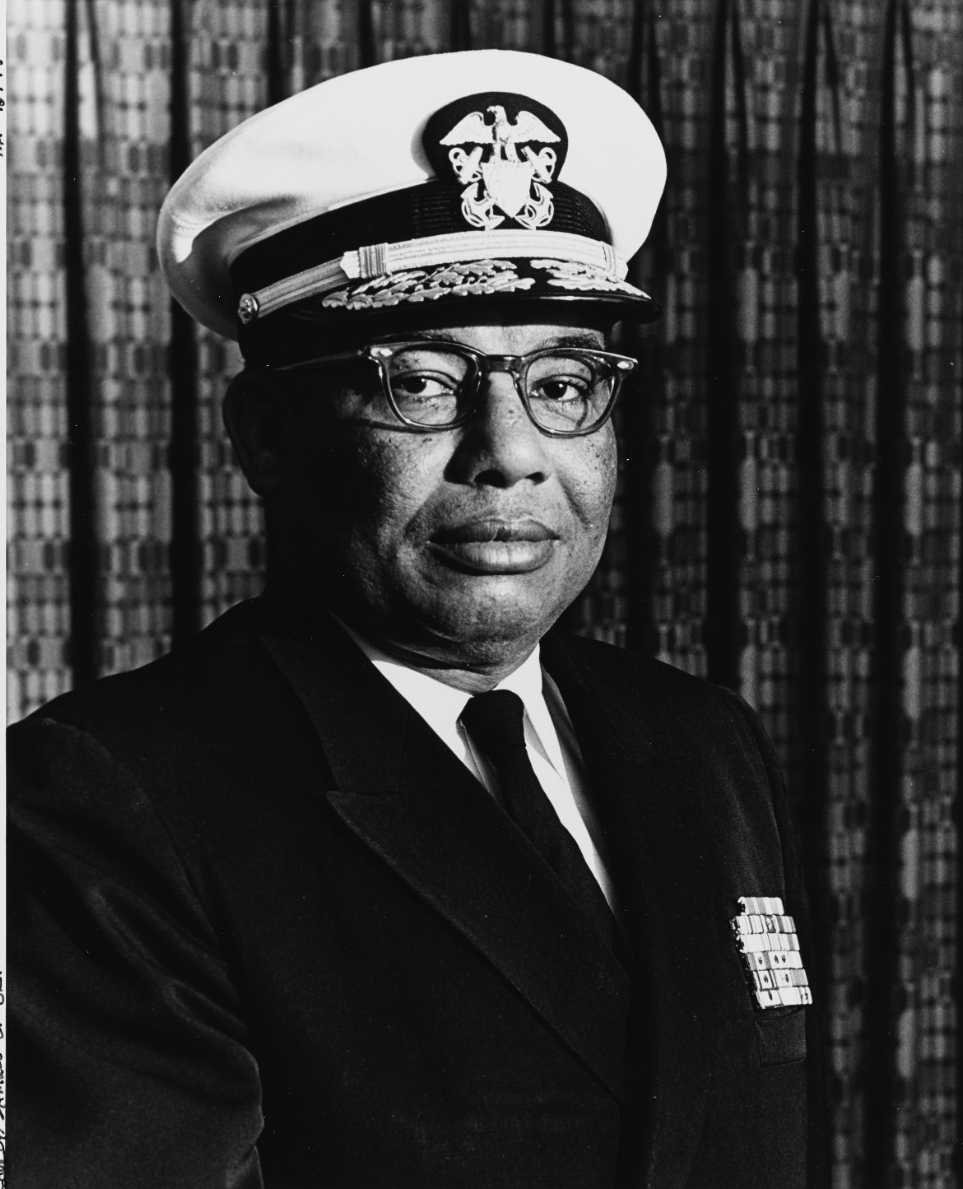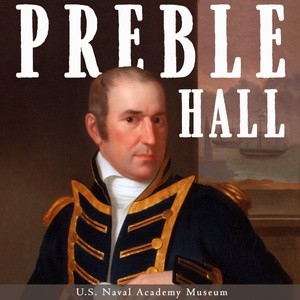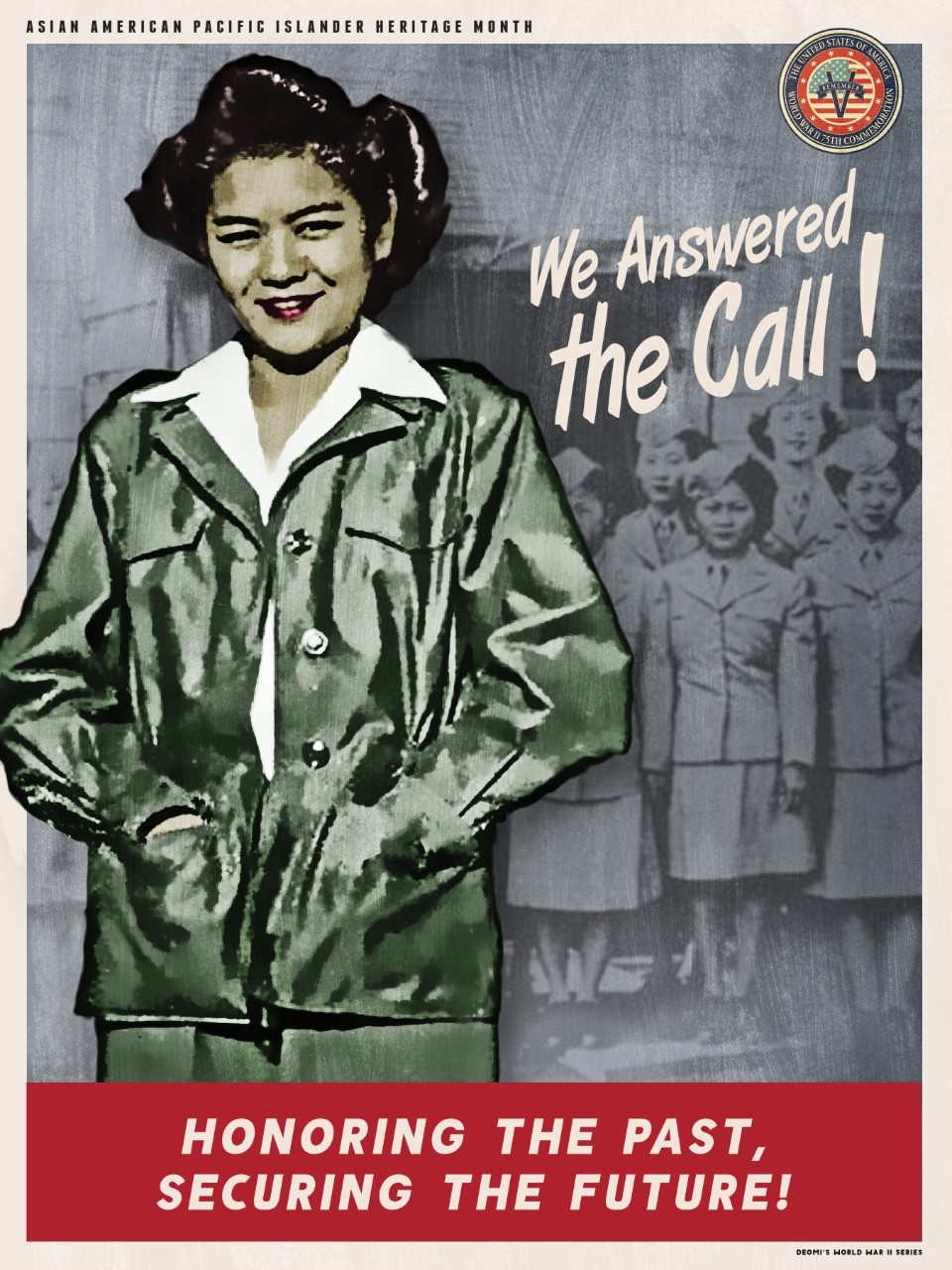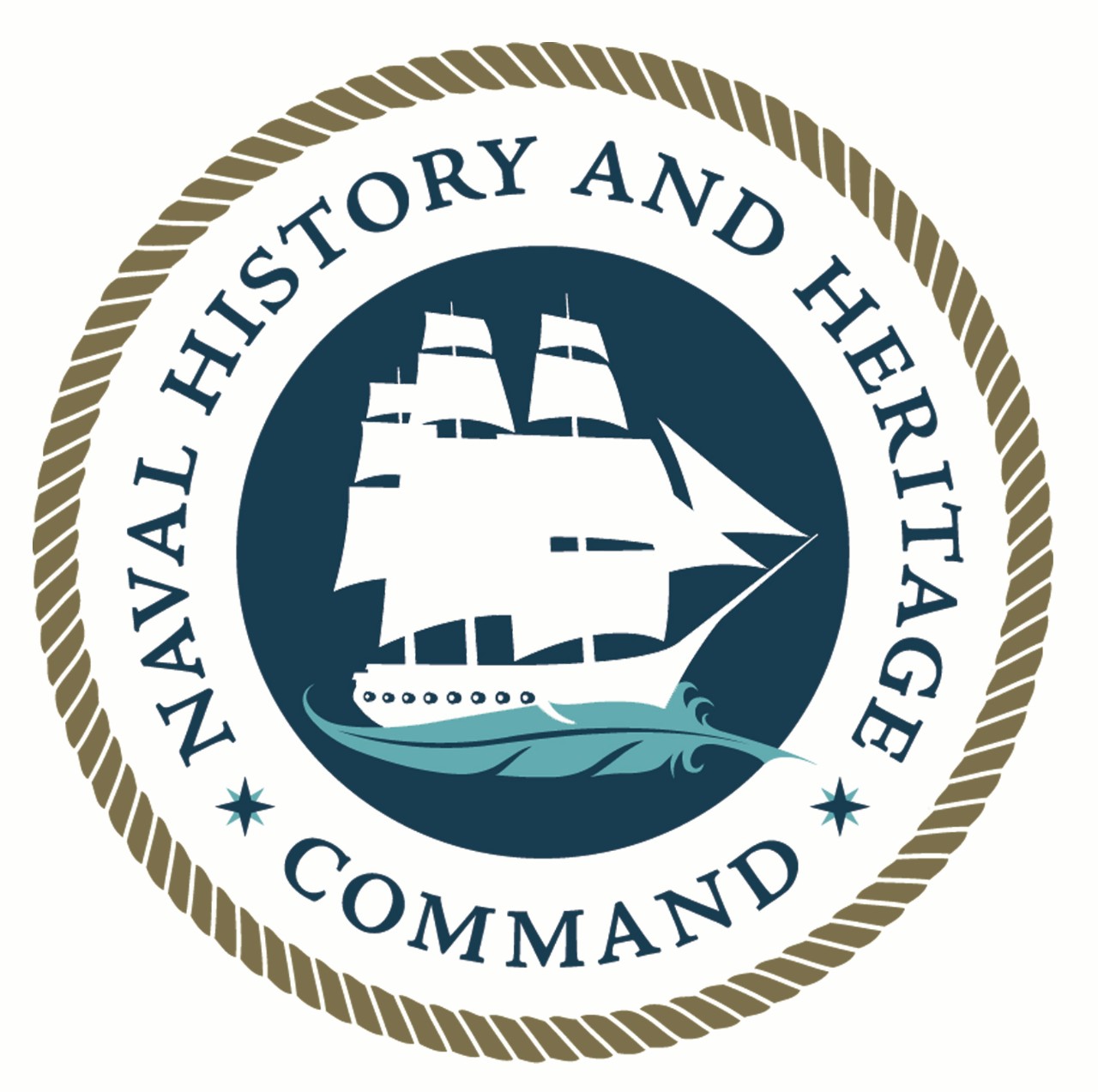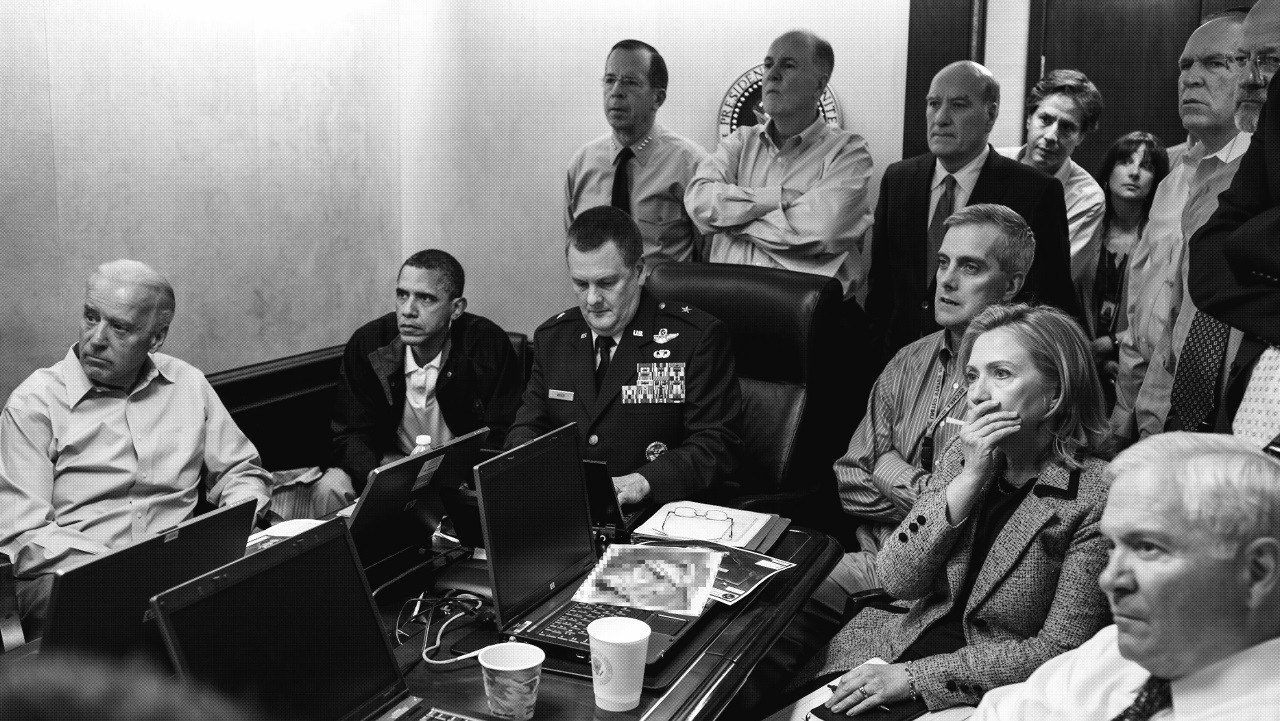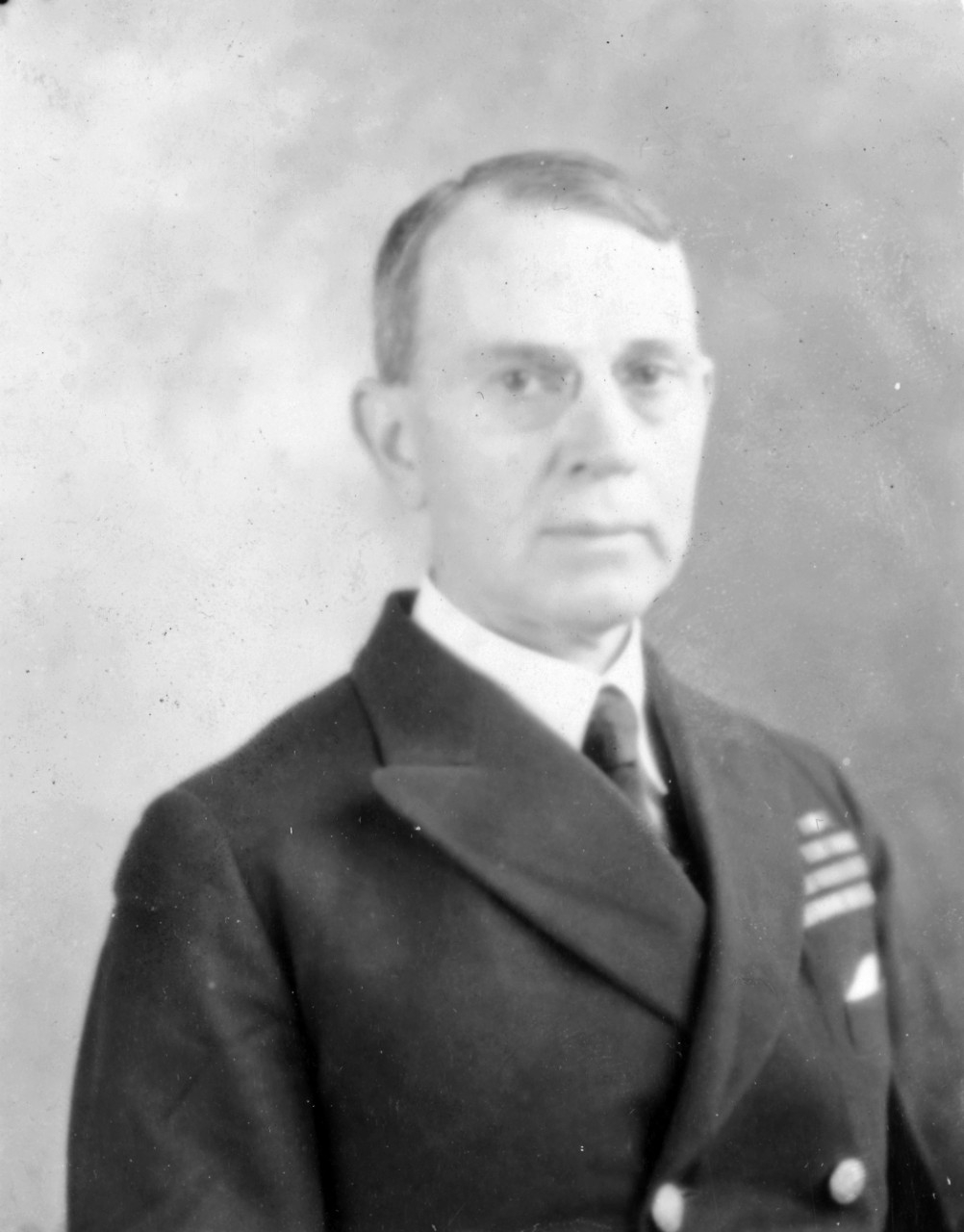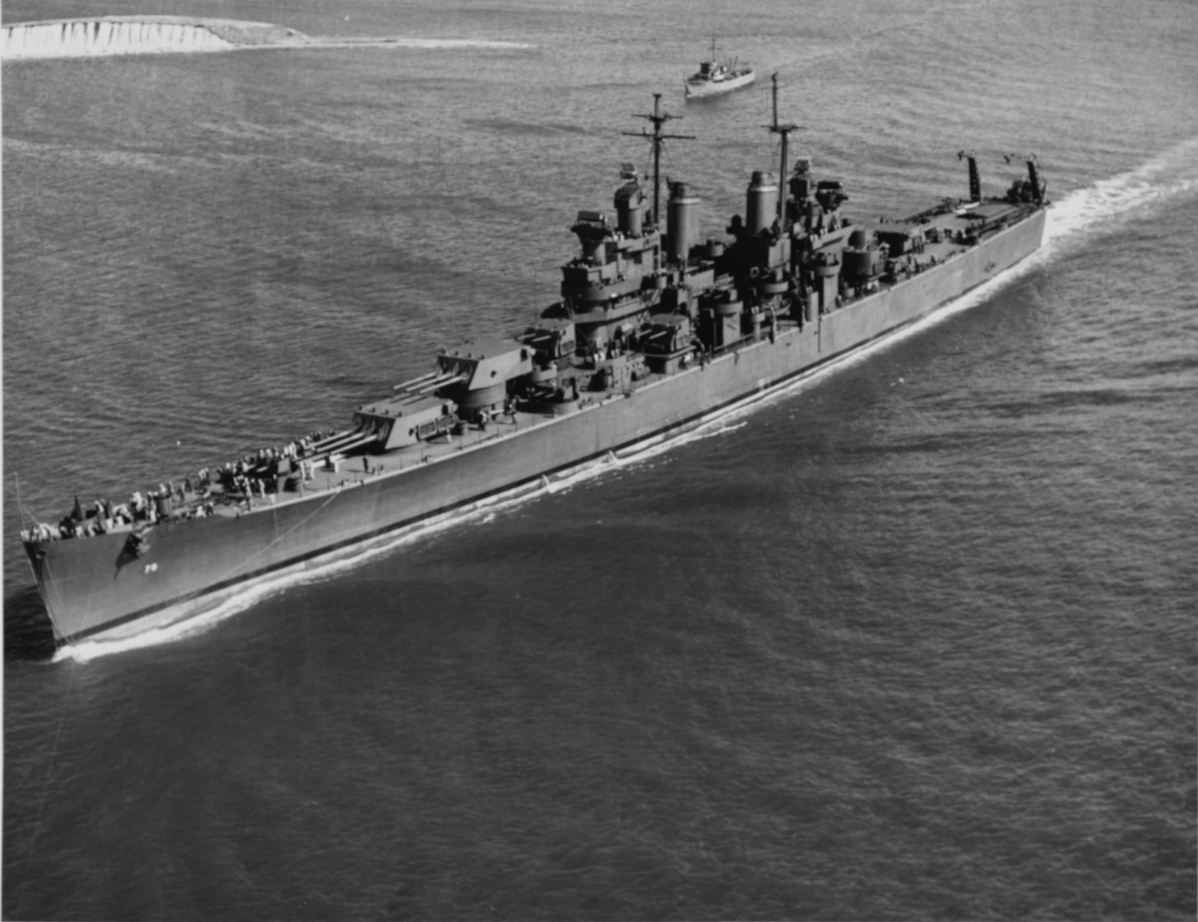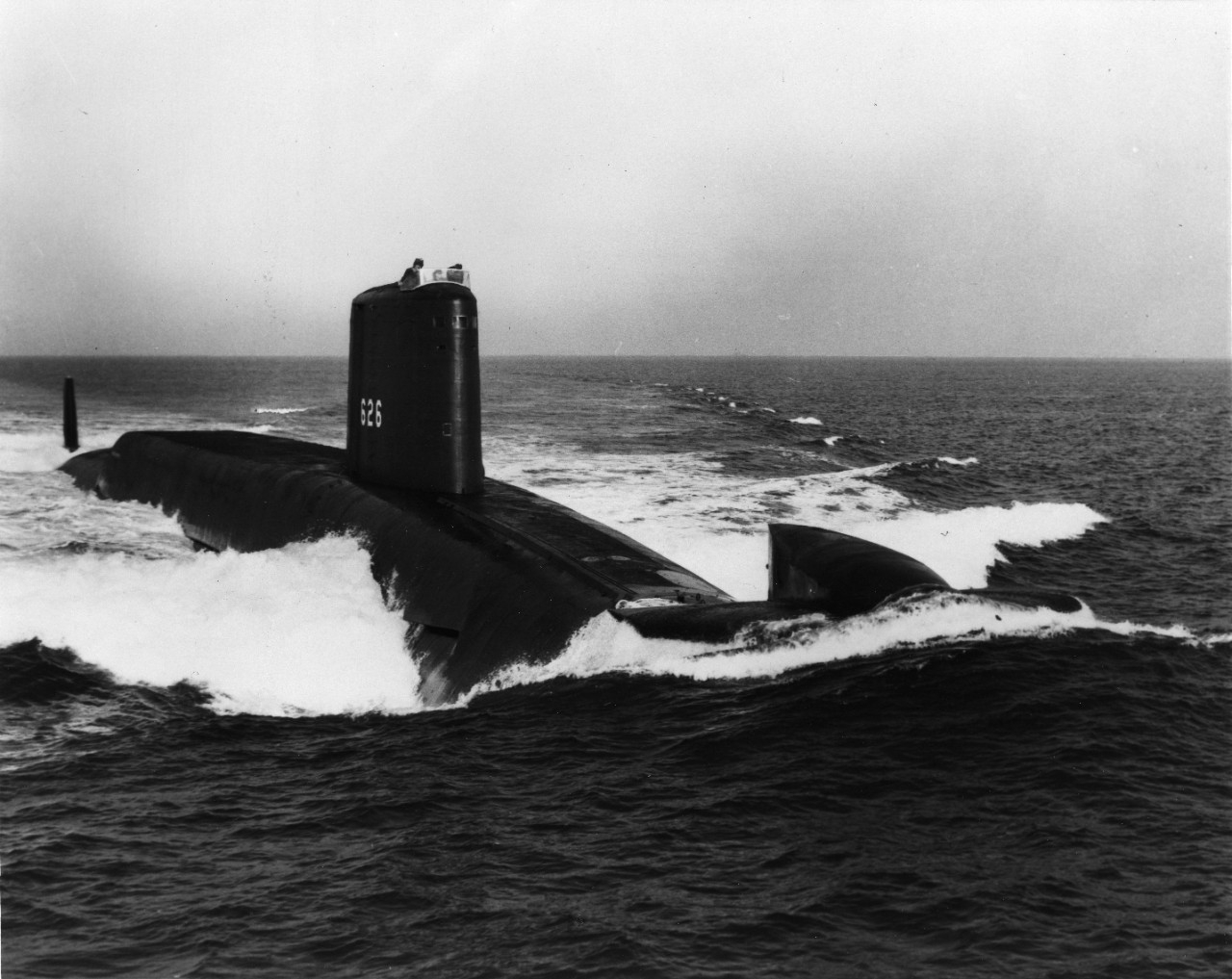Compiled by Brent Hunt, Naval History and Heritage Command’s Communication and Outreach Division
H-Gram 060
In his latest H-Gram, NHHC Director Sam Cox covers the 100th anniversary of the disappearance of fleet tug Conestoga—one of the greatest maritime mysteries of the 20th century—along with a short treatment of all 27 U.S. Navy ships and submarines lost with all hands due to weather and accidents. Also covered in this H-Gram is the recent positive identification of the destroyer USS Johnston, the deepest shipwreck ever found, lost in action during the Battle off Samar in October 1944. In addition, the last known survivor of Cmdr. Eugene B. Fluckey’s Medal of Honor crew of the valiant submarine USS Barb has passed away. John Henry Lehman, Jr., died on March 5 in Hagerstown, MD, at 98 years old. For more, read H-Gram 060 at NHHC’s Director’s Corner.
First African American Flag Officer—50 Years Ago
On April 28, 1971, Samuel L. Gravely, Jr., was promoted to rear admiral while serving as commander of USS Jouett, becoming the U.S. Navy’s first African American flag officer. A native of Richmond, VA, Gravely was also the Navy’s first African American commander, captain, and vice admiral. He was commissioned in 1944 and served during World War II onboard USS PC-1264. After the war, Gravely had a brief stint in the civilian world before he was recalled to active duty in 1949. He remained on active duty until his retirement in 1980. During the Korean War, he served onboard USS Iowa, and later in the 1950s, served on USS Toledo and USS Seminole. In the 1960s, Gravely served as executive officer and acting commander of USS Theodore E. Chandler, commanded USS Falgout, helped integration efforts at the Naval War College, served in the Defense Communications Agency, commanded USS Taussig, and served as coordinator of the Navy’s satellite communications program. His flag commands included the Naval Communications Command, Cruiser-Destroyer Group Two, the Eleventh Naval District, Third Fleet, and the Defense Communications Agency. In 1976, while serving as commander of Third Fleet, Gravely was promoted to vice admiral. After retirement from the Navy, Gravely kept busy working with the Armed Forces Communications and Electronics Association. After suffering a stroke later in life, he died on Oct. 22, 2004, at the National Naval Medical Center in Bethesda, MD. Arleigh Burke-class destroyer USS Gravely is named in his honor.
Preble Hall Podcast
In a recent naval history podcast from Preble Hall, retired Command Master Chief Richard Curtis recalls what it was like to serve on USS Falgout under Rear Adm. Samuel L. Gravely, Jr. The Preble Hall podcast, conducted by personnel at the U.S. Naval Academy Museum in Annapolis, MD, interviews historians, practitioners, military personnel, and other experts on a variety of naval history topics from ancient history to more current events. Also loaded recently was Why Gallipoli, in which Dr. Nicholas Lambert discusses his latest book, The War Lords and the Gallipoli Disaster: How Globalized Trade Led Britain to Its Worst Defeat of the First World War.
Asian American Pacific Islander Heritage Month
Celebrated in May each year, Asian American Pacific Islander Heritage Month recognizes the challenges faced by Asian Americans, Pacific Islanders, and Native Hawaiians and their vital contributions to the American story. Asian Americans and Pacific Islanders of various nationalities and ancestry—Chinese, Japanese, Korean, Filipino, Southeast Asian, Asian Indian, and Polynesian—have a rich legacy of service and sacrifice in the U.S. Navy dating back to the 19th century. Asian American Pacific Islander Heritage Month was introduced in the House of Representatives in June 1978. The joint resolution was passed by the House and Senate, and was later signed by the president on Oct. 5, 1978. The law directed the President to declare a seven-day period, beginning May 4, 1979, as Asian/Pacific American Heritage Week. It wasn’t until 1992 that Congress designated May as Asian/Pacific American Heritage Month. For more on the contributions of Asian Americans and Pacific Islanders in the U.S. Navy, visit NHHC’s website.
Annual Navy History and Heritage Awards Program: Apply Now!
NHHC is now accepting submissions for the annual Navy History and Heritage Awards Program. The submission deadline is June 1. The annual program was established to recognize public and nonprofit organizations, including museums and individuals, who incorporate the history and heritage of the U.S. Navy into their publications, documents, and artifacts at their facilities. Each organization must encourage and publicize scholarly, well-researched historical stories that depict the Navy’s history and heritage as well as preserve and maintain artifacts on loan from the Navy. “Many private, nongovernment museums are telling great stories about the history of the U.S. Navy to the American public,” said NHHC Director Sam Cox. “These awards are for those museums that serve as force multipliers in informing the public of our Navy’s rich history, proud heritage, and the importance of sea power to the security of the nation.” For more information on the awards program, read the article at NHHC’s website.
Osama bin Laden Killed in Pakistan—Ten Years Ago
On May 2, 2011, President Barack Obama announced that Navy SEALs had raided Osama bin Laden’s compound in Abbottabad, Pakistan, and killed America's most-wanted terrorist during the mission dubbed Operation Neptune Spear. After nearly ten years on the run, the elite special operations group killed the al-Qaeda leader in a daring nighttime raid. Bin Laden, the mastermind of the Sept. 11, 2001, terrorist attacks, left nearly 3,000 dead in New York City, the Pentagon in Washington, DC, and Shanksville, PA. It was the deadliest attack on American soil since the Japanese attacked Pearl Harbor on Dec. 7, 1941. In response to the attacks, the U.S. launched Operation Enduring Freedom, which officially began Oct. 7, 2001, with American and British air strikes against al-Qaeda and Taliban forces in Afghanistan. Initially, the Taliban was removed from power and al-Qaeda was seriously crippled, but forces continually dealt with a stubborn Taliban insurgency, infrastructure rebuilding, and corruption among the Afghan National Army, Afghan National Police, and Afghan Border Police. Enduring Freedom officially ended Dec. 28, 2014, but coalition forces remain on the ground to assist with training Afghan security forces.
First Curator of the Navy Appointed
On April 28, 1930, Secretary of the Navy Charles Adams appointed the first Curator of the Department of the Navy, Dudley Knox. Knox had been heading the Office of Naval Records and Library and the Historical Section since 1921, and oversaw both for 25 years. The two offices merged under Knox in 1927. As part of an attempt to establish a national Navy museum, Adams asked on April 15, 1930, for an inventory of Navy and Marine Corps monuments and relics at stations across the country. Knox was appointed to coordinate the project. As curator, Knox also became responsible for collection and preservation of art objects, trophies, and relics of historical or inspirational value to the Navy. Today, the legacy continues with the Director of Naval History and Heritage Command serving as the Curator of the Navy. For more on the origins of the Naval History and Heritage Command, visit NHHC’s website.
Webpage of the Week
This week’s Webpage of the Week has recently been updated in NHHC’s DANFS index. USS Canberra was commissioned at the Boston Navy Yard on Oct. 14, 1943. The ship was named in honor of the Australian heavy cruiser HMAS Canberra, which sank after taking heavy damage during the Battle of Savo Island. Canberra was the first U.S. Navy cruiser named for a foreign capital. During World War II, Canberra participated in major naval battles in the Pacific to include the Battle of the Philippine Sea and the Battle of Peleliu, before she was torpedoed by a Japanese aircraft during air raids on Okinawa and Taiwan. Canberra subsequently spent the remainder of the war under repairs at the Boston Navy Yard. On May 26, 1958, Canberra met with the destroyer USS Blandy, carrying the Unknown Serviceman of the European Theater, and her sister ship USS Boston, carrying the Unknown Servicemen of the Pacific Theater and the Korean War Unknown. All three caskets were transported to Canberra and the selection of the Unknown Serviceman of World War II was made by Medal of Honor recipient Hospitalman William R. Charette. The selected World War II casket, along with the Korean Unknown Serviceman, were then returned to Blandy for transportation to the Washington Navy Yard, and their subsequent interment in the Tomb of the Unknowns at Arlington National Cemetery, VA, on May 30. For more on the history of Canberra, check out the page today. It has been updated by NHHC historians Jeremiah D. Foster and Robert J. Cressman.
Today in Naval History
On April 27, 1963, USS Daniel Webster was launched at Groton, CT, and the submarine was commissioned about a year later. While submerged in the Eastern Test Range during shakedown operations off the coast of Cape Canaveral, FL, the boat successfully test-fired UGM-27C Polaris submarine-launched ballistic missiles on May 25 and June 8. Assigned to Submarine Squadron 18, Daniel Webster stood out of the Polaris Missile Facility Atlantic, Charleston, SC, and began her first deterrent patrol on Sept. 28, 1964. The submarine completed 16 patrols over the next four years. On Aug. 29, 1968, her gold crew conducted the first submerged launch of an improved production version of the Polaris. After overhaul and refitting, Daniel Webster was reassigned to Submarine Squadron 15, and in November 1969, she and USS Guardfish became the first two nuclear submarines to meet in the Panama Canal. During the 1980s, Daniel Webster accomplished multiple milestones to include her 50th deterrent patrol, and the launching of two Poseidon missiles during an operational test. Before decommissioning in August 1990, Daniel Webster had conducted 77 deterrent patrols.
For more dates in naval history, including your selected span of dates, see Year at a Glance at NHHC’s website. Be sure to check this page regularly, as content is updated frequently.

